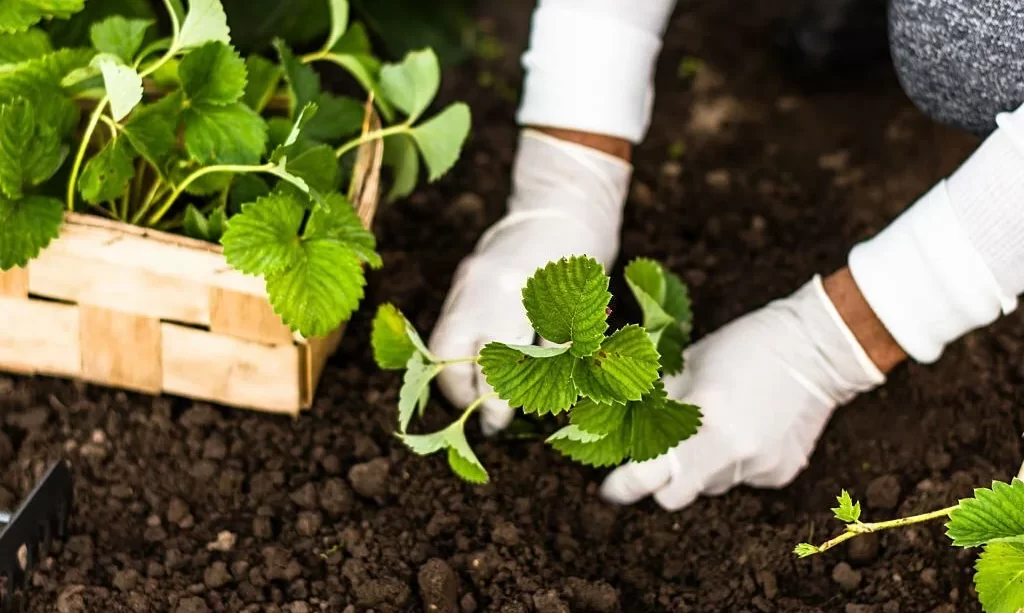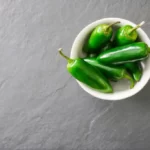The allure of ripe, juicy strawberries in Michigan’s diverse climates is a tradition and a treat. Knowing when to plant strawberries in the Great Lakes State is a fundamental part of cultivating this beloved fruit. Whether you’re an experienced gardener or a novice, the timing of strawberry planting can make all the difference. In this guide, we’ll explore the art of when to plant strawberries in Michigan, unravel the nuances of strawberry cultivation, and seize the opportunities that the state’s unique climate offers for growing these sweet, red gems.
- Enjoy a great harvest of super-sweet berries in your home garden with Bonnie Plants Strawberry
- Strawberries are easy-to-grow and perennial in zones 5 to 9
- This fruit is an attractive addition to gardens with its pretty leaves and flowers, and grows beautifully on sunny patios, porches, and balconies
- Harvest red, ripe strawberries and enjoy them fresh from the garden, but they also taste great in pies, smoothies, salads, and preserved in jams and jellies
- Strawberries grow 8 to 10 inches tall and are ready for harvest when fully red
Strawberry Cultivation
Michigan’s strawberry enthusiasts are familiar with a range of strawberry varieties, including the popular June-bearing, everbearing, and day-neutral types. Understanding the basics of strawberry cultivation is the cornerstone of a fruitful harvest. Strawberries thrive in well-draining soil, ample sunlight, and a climate with defined seasons. Michigan’s diverse regions cater to various strawberry types, making it possible to enjoy fresh strawberries throughout the growing season.
Timing for Strawberry Planting
Timing is everything when it comes to planting strawberries in Michigan, as the state’s climate zones and variable frost dates play a pivotal role. The preferred time for strawberry planting typically falls between late April and early June, but the following considerations are crucial:
- Frost Dates: Michigan’s fluctuating spring temperatures require careful consideration of frost dates. In southern Michigan, planting can commence in late April, while in northern parts of the state, it’s best to wait until early June to avoid potential late frosts.
- Strawberry Types: Selecting the right strawberry type is essential. June-bearing strawberries are known for their bountiful harvest in late spring, everbearing strawberries yield smaller but consistent crops throughout the season, and day-neutral strawberries offer a continuous supply. Choose the type that aligns with your local climate and desired harvest times.
- Soil Preparation: Prior to planting, it’s crucial to prepare your soil. Ensure it’s well-draining and enriched with organic matter like compost or well-rotted manure. The soil should be loose and free of debris to promote healthy root development.
Understanding the timing for strawberry planting in Michigan is like conducting a symphony, with each note playing a significant role in the grand performance of a bountiful strawberry harvest. By considering these factors, you can ensure that your strawberry patch thrives and offers a sweet, homegrown taste of summer’s finest offerings.
Pre-Planting Preparations
Before you embark on your strawberry planting journey in Michigan, some essential pre-planting preparations are in order:
- Soil Analysis: Start by conducting a soil test to determine your soil’s pH level and nutrient content. Strawberries thrive in slightly acidic soil with a pH level between 5.5 and 6.5. If necessary, amend the soil to adjust the pH using lime or sulfur, as indicated by the soil test results.
- Site Selection: Carefully select the location for your strawberry patch. Opt for a sunny spot that receives at least 6-8 hours of direct sunlight daily. Adequate sunlight is crucial for healthy fruit production.
- Raised Beds or Mounded Rows: Consider creating raised beds or mounded rows for planting your strawberries. This setup ensures good drainage and prevents waterlogging, which can harm strawberry plants. The raised beds also make it easier to manage and maintain the plants.
- Spacing and Layout: Plan the spacing and layout of your strawberry plants. Strawberries are typically planted in rows with 12-18 inches between plants and 3-4 feet between rows. Proper spacing encourages air circulation and helps prevent disease.
- Incorporating Organic Matter: Enhance your soil’s fertility by incorporating organic matter. Compost or well-rotted manure can be mixed into the soil before planting to provide essential nutrients and improve soil structure.
Planting Techniques
Proper planting techniques are crucial for the success of your strawberry patch in Michigan:
- Planting Depth: When planting your strawberry plants, ensure that the roots are well-spread and the crowns (the point where the roots meet the stem) are at soil level. Planting too shallowly can expose the roots to drying out, while planting too deeply can hinder growth.
- Spacing: Follow the recommended spacing guidelines for your chosen strawberry type, maintaining the specified distance between plants and rows. Proper spacing ensures that the strawberry plants have enough room to grow and produce fruit without overcrowding.
- Watering: After planting, water your strawberries thoroughly to settle the soil and hydrate the roots. Continue to provide regular and consistent watering as the plants establish themselves. Strawberries require consistent moisture to set and ripen their fruit.
- Mulching: Applying a layer of organic mulch around your strawberry plants helps conserve soil moisture, regulate soil temperature, and suppress weed growth. Mulch also prevents soil splashing onto the fruit, reducing the risk of diseases.
By diligently following these pre-planting preparations and planting techniques, you’ll be well on your way to growing a thriving strawberry patch in Michigan. Proper soil preparation, site selection, and layout will ensure that your strawberry plants have the best start and provide you with a bumper crop of delicious berries to enjoy.
Maintenance and Care
Maintaining and caring for your strawberry patch in Michigan is an ongoing process that contributes to the success of your harvest:
- Watering: Provide consistent and even watering to your strawberry plants, especially during dry periods. It’s essential to keep the soil evenly moist but not waterlogged. Irrigation is particularly crucial during the flowering and fruiting stages.
- Mulching: Maintain a mulch layer around your strawberry plants to conserve moisture, suppress weeds, and protect the fruit. Straw, straw mulch, or other organic materials work well for this purpose.
- Fertilization: Monitor your strawberry plants for signs of nutrient deficiencies and provide them with the necessary nutrients. A balanced, slow-release fertilizer can be applied after the first harvest in June-bearing varieties and periodically for everbearing and day-neutral types.
- Pest and Disease Management: Regularly inspect your strawberry plants for common pests like slugs, aphids, and strawberry root weevils. Use organic pest control methods or companion planting to deter pests. Keep an eye out for diseases like gray mold and leaf spot and take prompt action if needed.
- Bird Protection: In Michigan, birds can be a significant challenge for strawberry growers. Consider using bird netting or other protective measures to prevent birds from feasting on your ripe berries.
Harvesting and Storage
The excitement of harvesting your homegrown strawberries is a rewarding moment in your gardening journey:
- Determining Readiness: Strawberries are ready for harvest when they reach their full, vibrant color and are firm to the touch. For June-bearing varieties, the bulk of the harvest usually occurs in late spring, while everbearing and day-neutral types offer multiple smaller harvests throughout the growing season.
- Picking Strawberries: Gently pick the ripe strawberries from the plants, being careful not to damage the fruit or the plants themselves. It’s a delightful experience to enjoy the sweet scent of freshly picked strawberries.
- Immediate Consumption or Preservation: Freshly picked strawberries are a delightful treat on their own or in various culinary creations. If you have a surplus, consider preserving them by freezing, making jams, or drying them to enjoy their goodness year-round.
- Storage: Store freshly picked strawberries in the refrigerator, but they are best enjoyed soon after picking. Properly stored strawberries can last a few days, but their flavor is at its peak when enjoyed fresh.
Conclusion
Cultivating strawberries in Michigan is more than a hobby; it’s a connection to the state’s agricultural heritage and a celebration of nature’s sweetness. Timing your planting according to Michigan’s climate, choosing the right varieties, and providing diligent care during the growing season lead to the delicious reward of ripe, homegrown strawberries. These red gems are not only a treat for the palate but also a symbol of the fruitful connection between your garden and Michigan’s rich agricultural traditions. So, get ready to savor the sweetness of your labor and cherish the joys of homegrown strawberries in the Great Lakes State.




